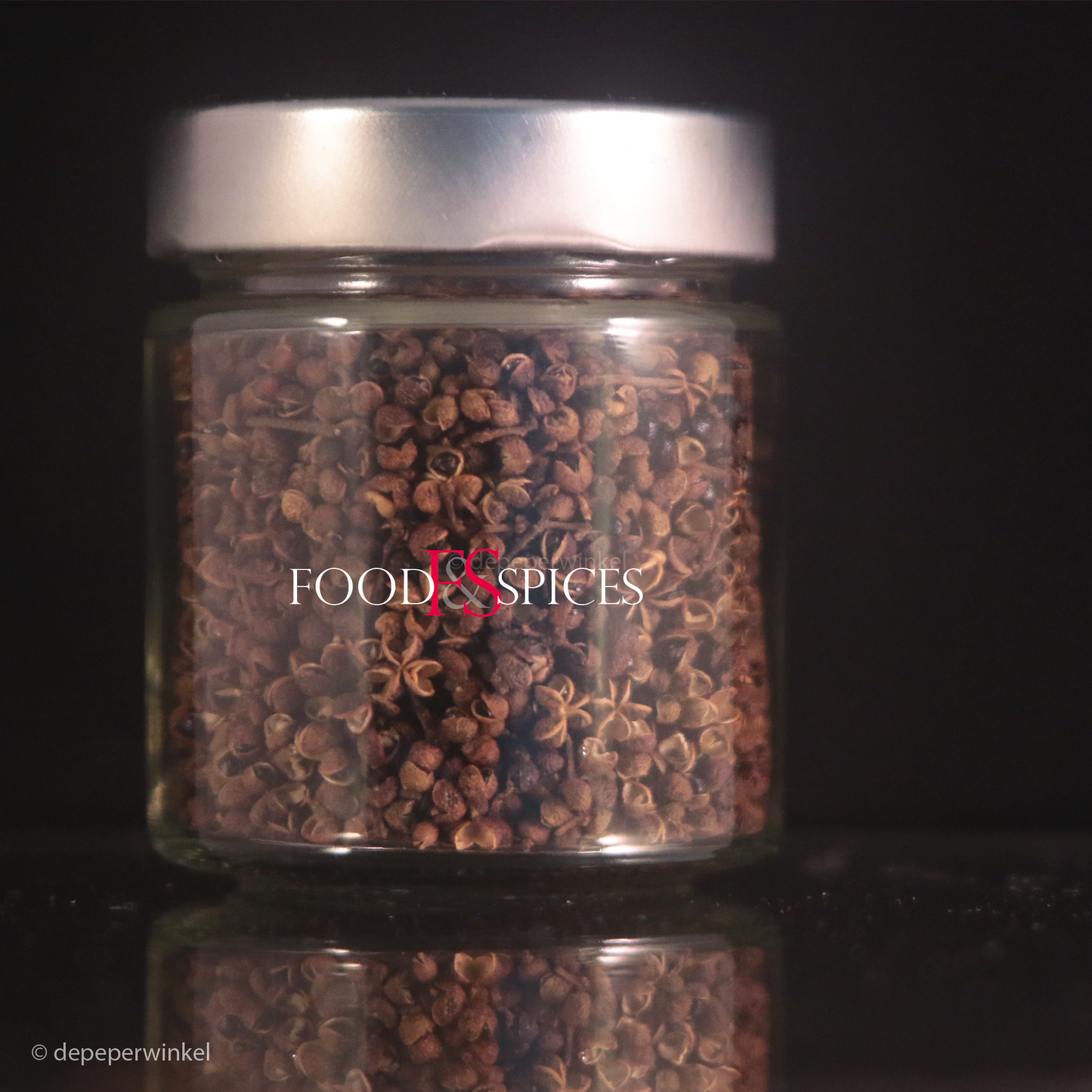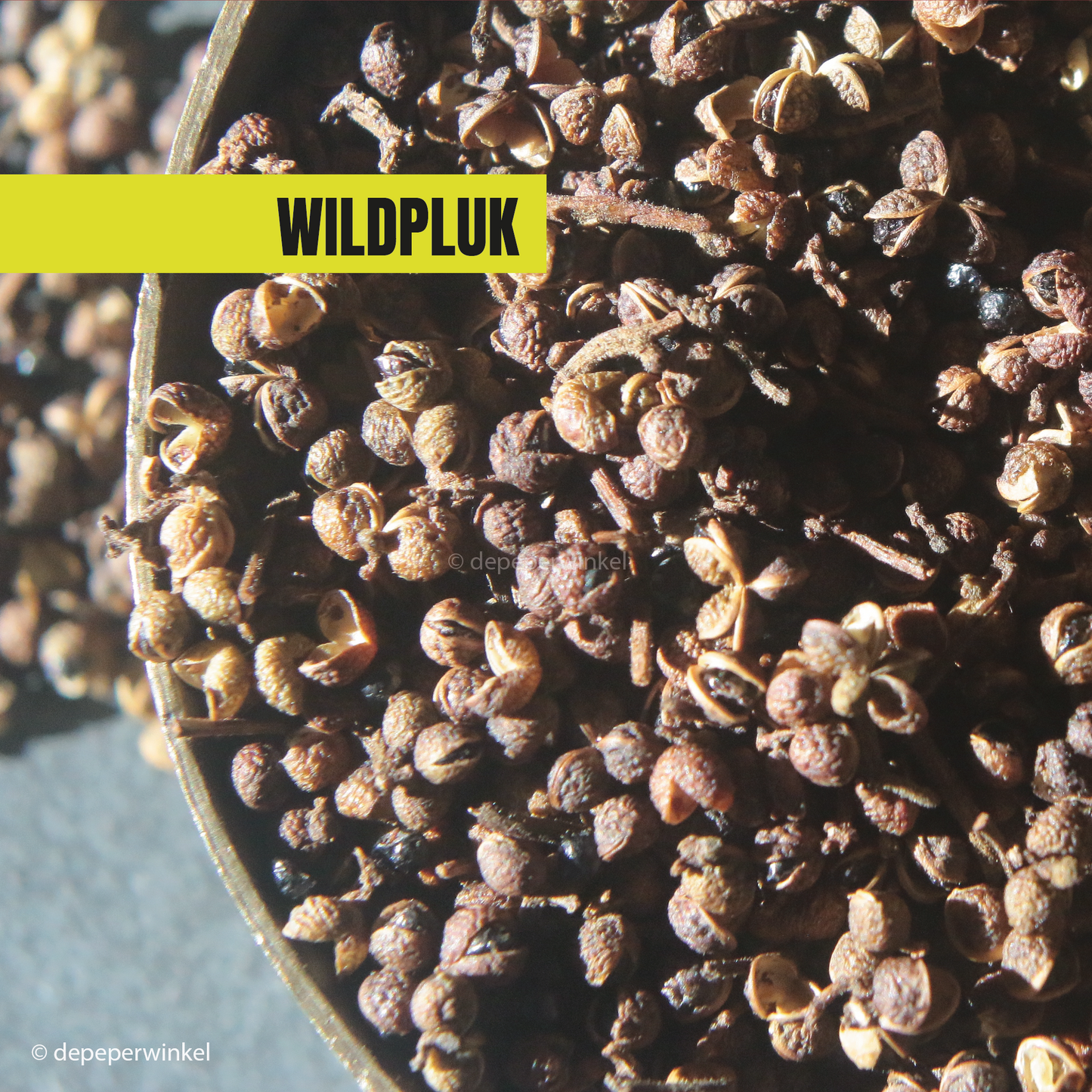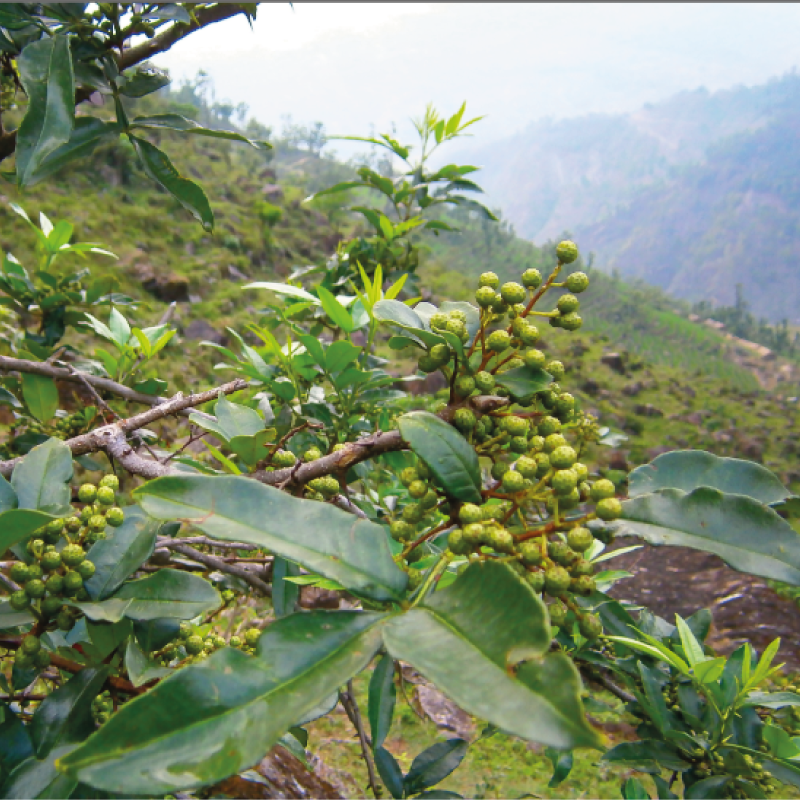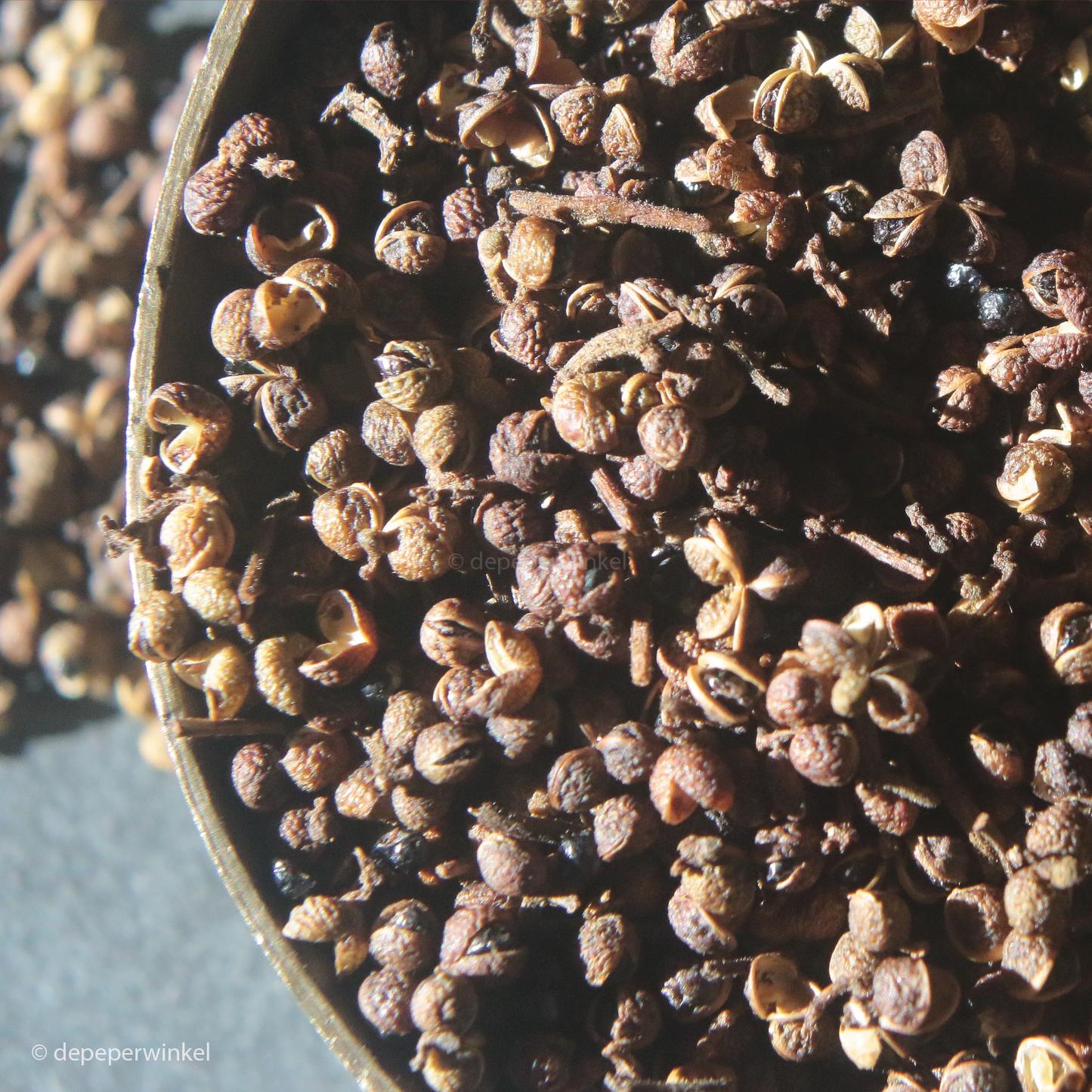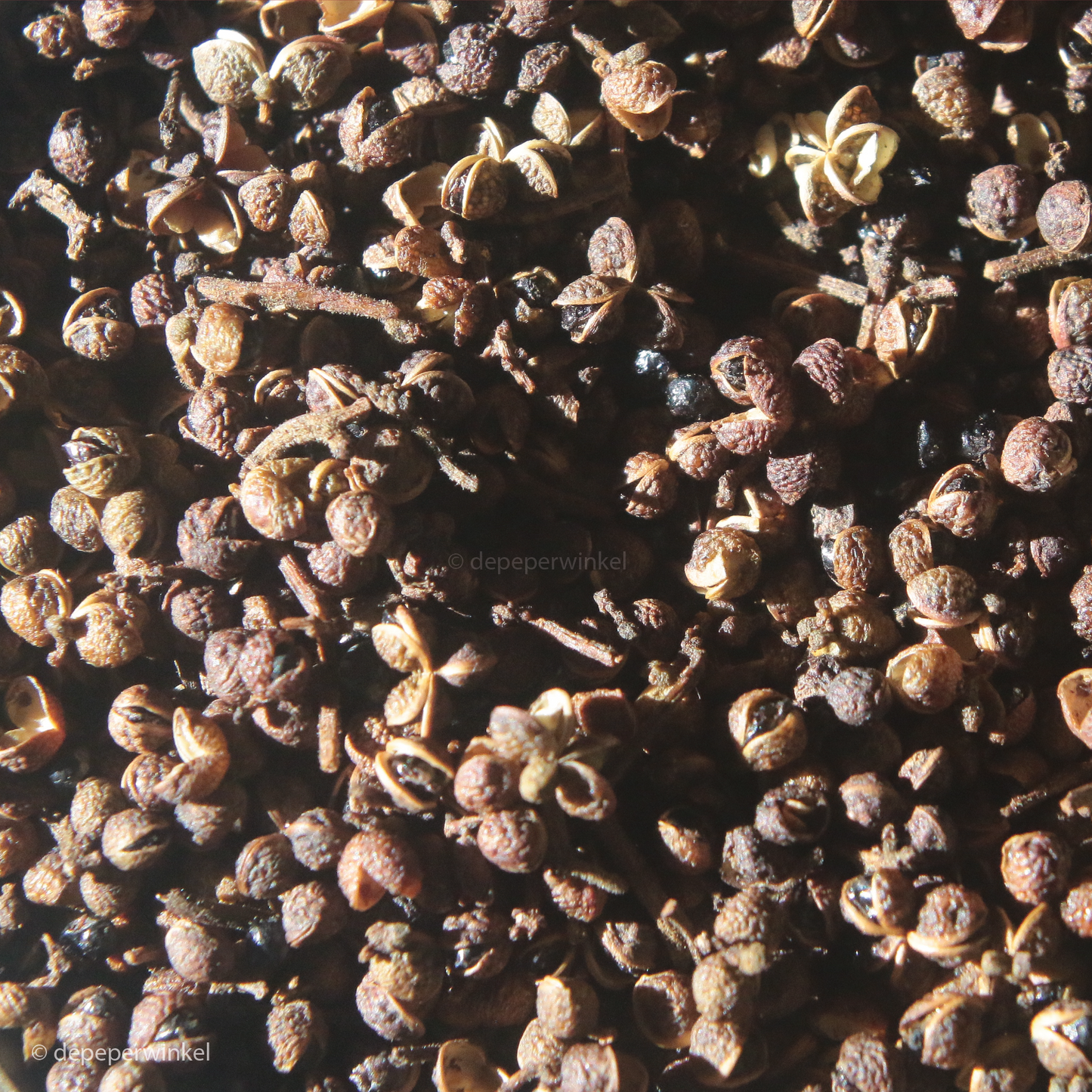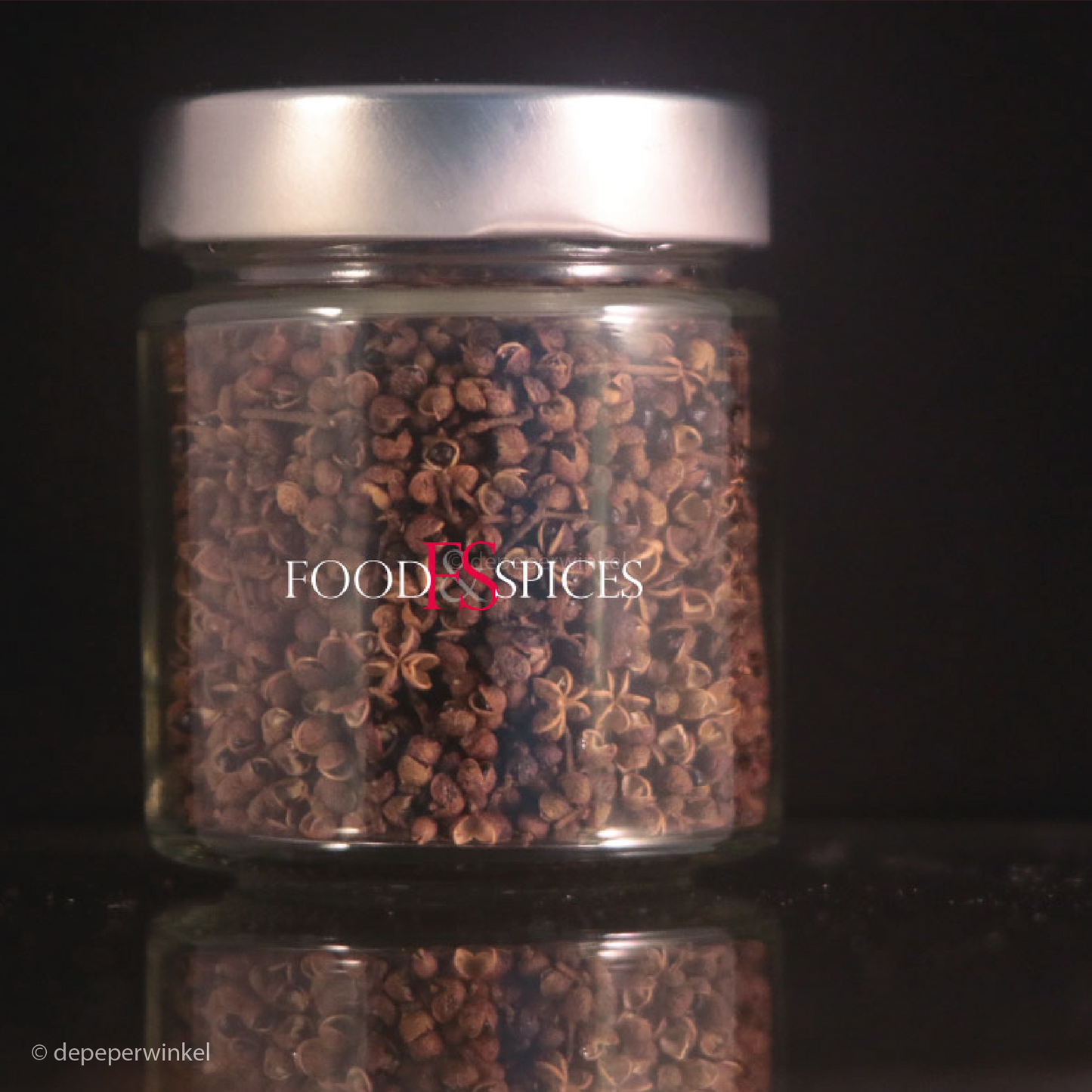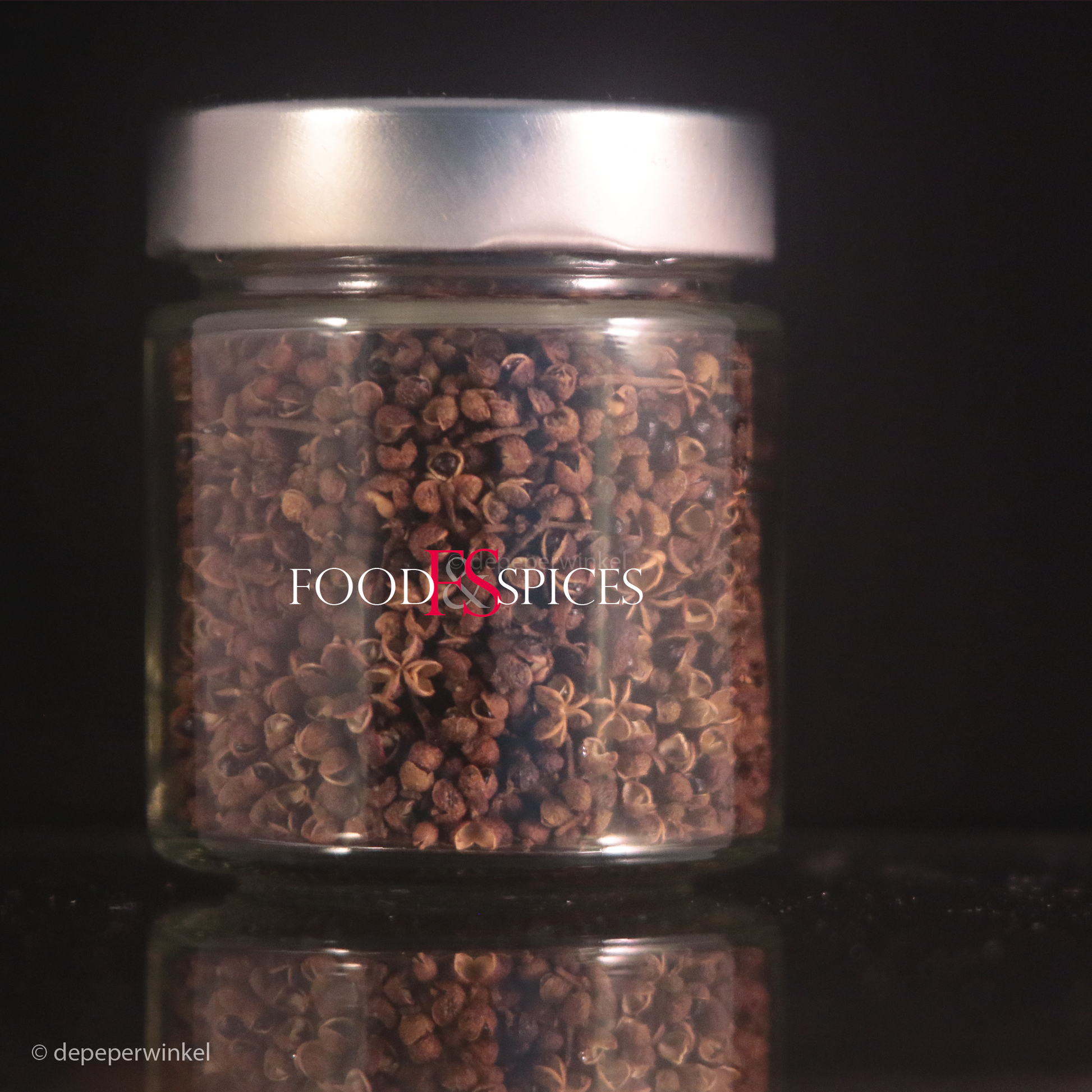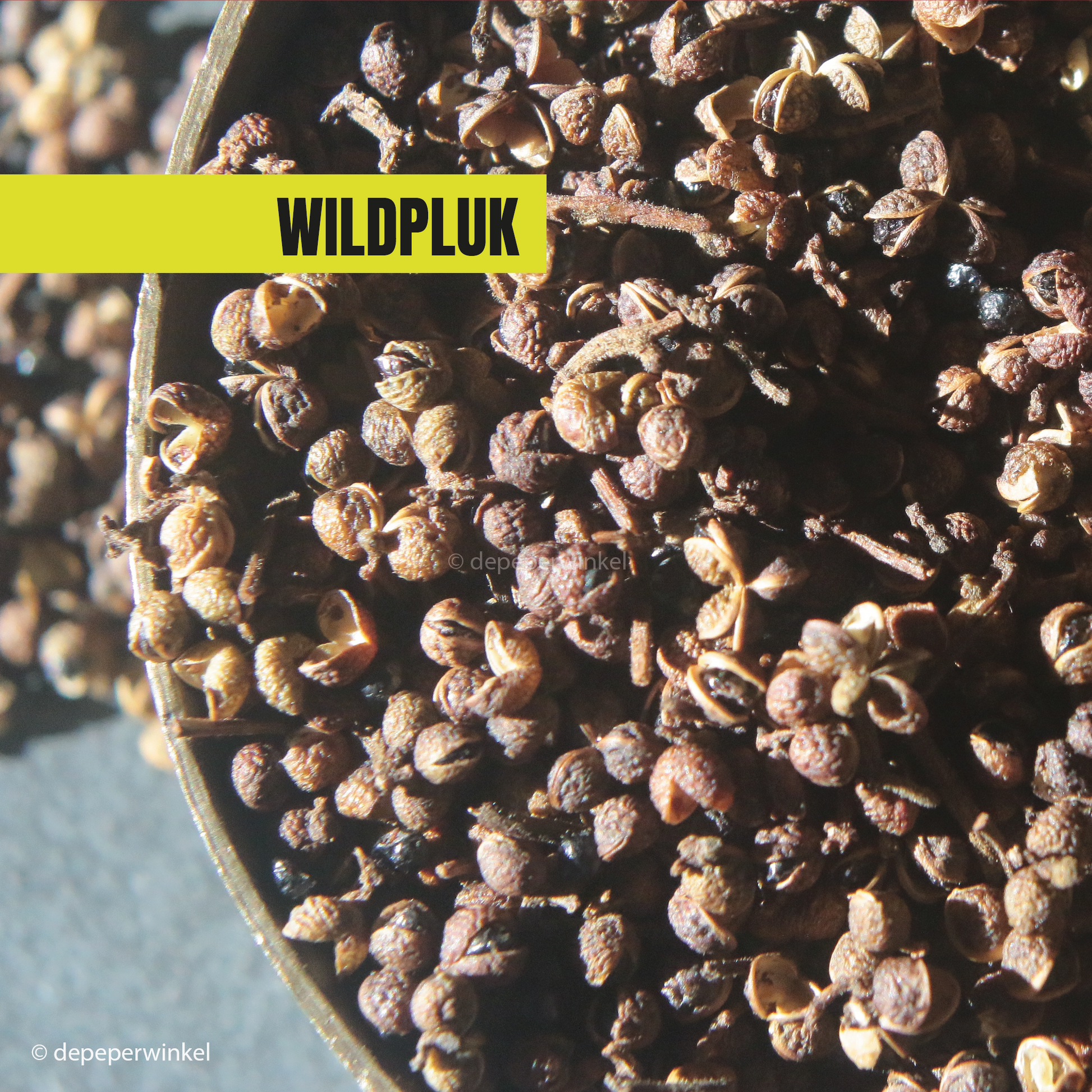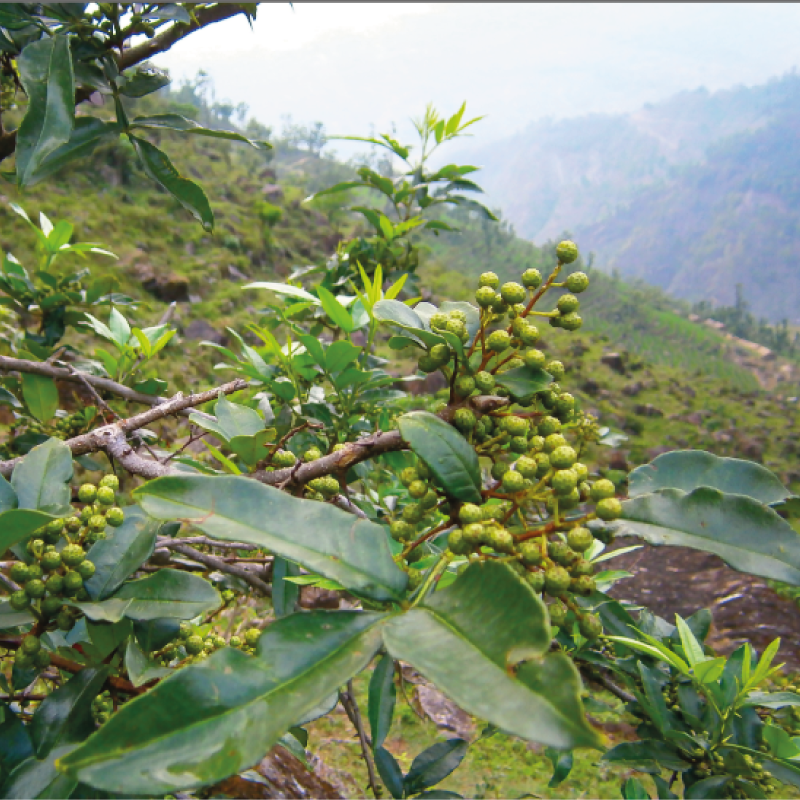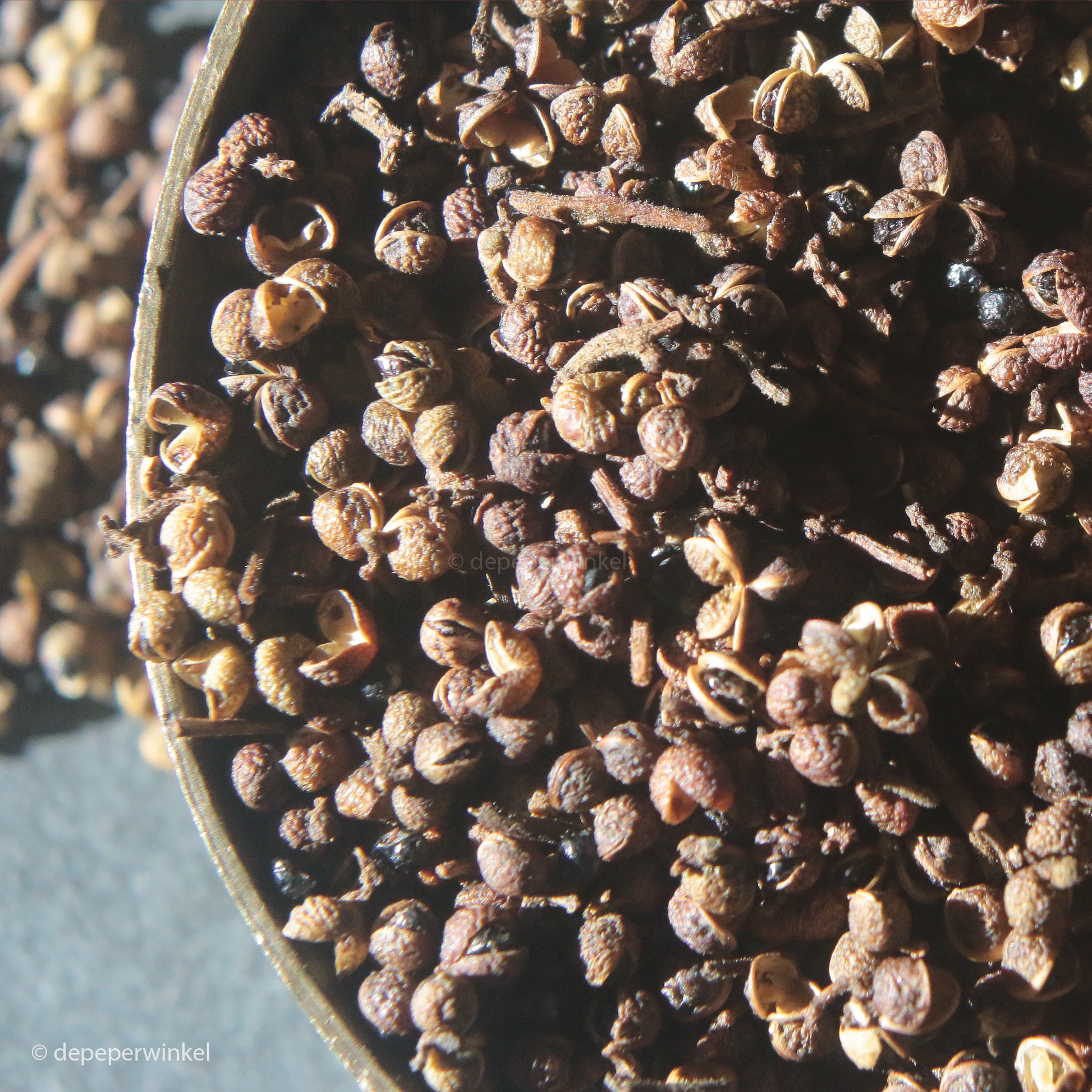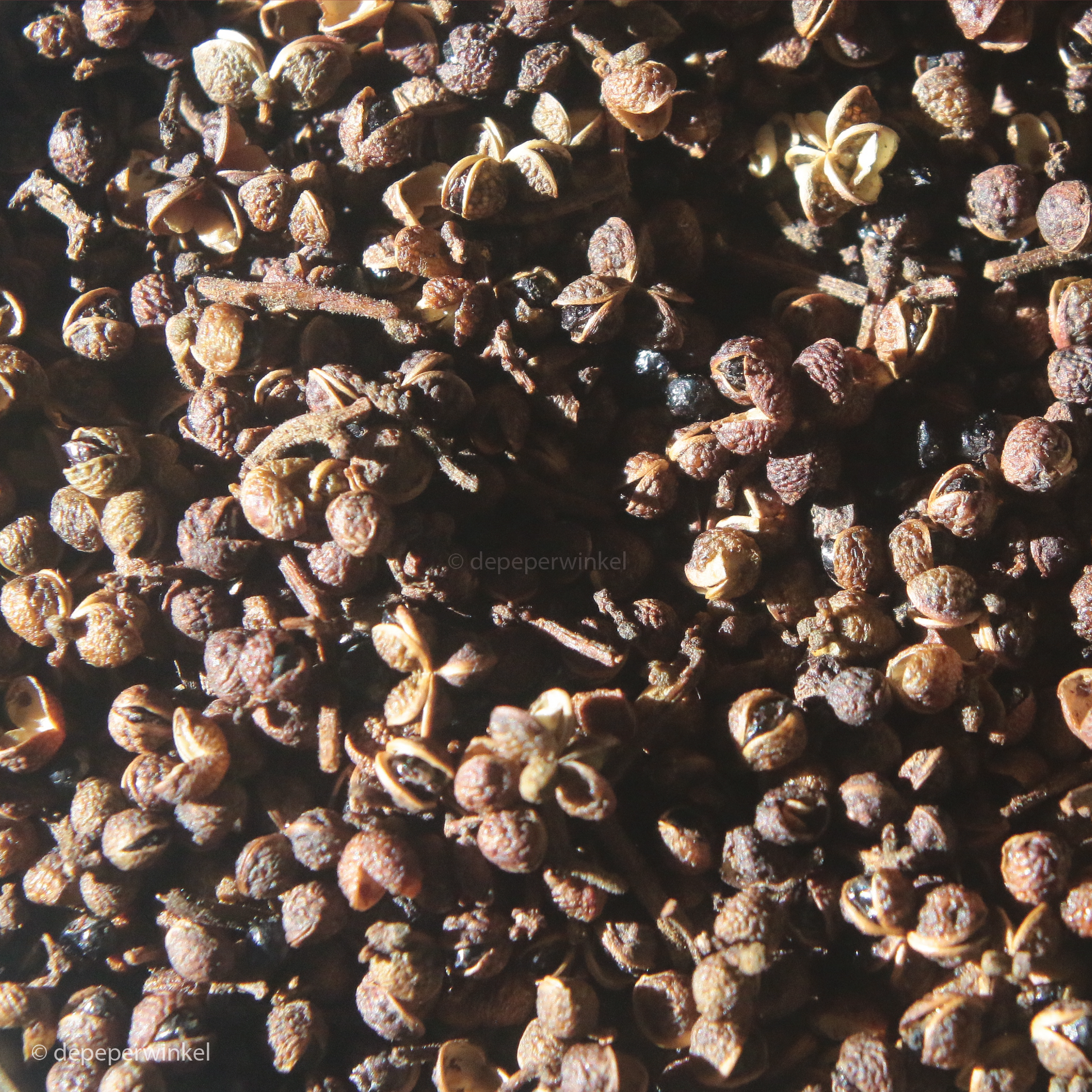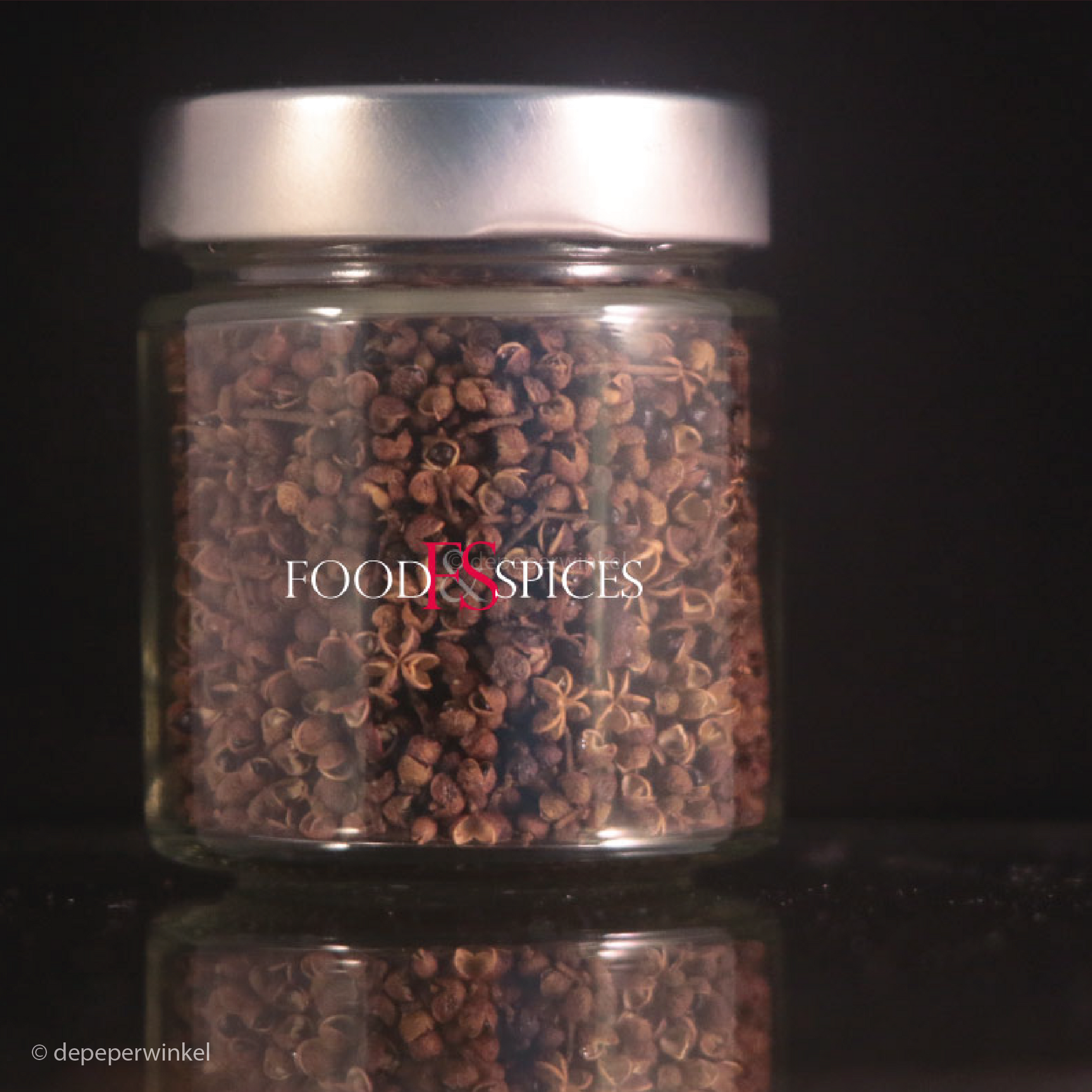depeperwinkel
Ma khaen - Laotian mountain<tc>pepper</tc>
Ma khaen - Laotian mountain<tc>pepper</tc>
Temporarily out of stock
Unable to load availability for pickup
This mountain
In stock. Temporarily unavailable. In stock, the Vietnamese mountain
The
This mountain
He has a soft, tingling sharpness and the unmistakable citrus flavour (mandarin) that becomes stronger and sweeter when the
The berry is quite small, like that of the andaliman, and, like the andaliman, is harvested by hand. No easy feat, as the branches of the Zanthoxylum have vicious spines. The berries grow in smaller clusters that, when dried, resemble "mini star anise." Each berry contains a single seed.
We also have a Vietnamese version of the same plant.
The unique sharpness experience of sanshol
Characteristic of all Zanthoxylum
The tingling sensation is accompanied by a slight numbness, jokingly compared to tasting a 9-volt battery. A single berry is enough to experience that! This somato-sensation, stimulation by touch, has been used for centuries as an anesthetic in traditional Asian medicine. Its effects are very complex and the subject of extensive studies. Hydroxy-α-sanshol, in particular, is said to cause the tingling, and there are certain parallels with the pungency experienced with capsaicin, the pungent substance in chili peppers.
Smell and taste
The berries have a complex aroma, in which you tangerine peel and tea, but also anise and menthol, and the sweet notes of angelica. The scent is related to that of black
- D-limonene (dipentene), sweet citrus flavor, found in modest amounts in nutmeg, mace, and cardamom,
- β-phellandrene, pleasant mint and citrus flavor, also found in allspice,
- β-pinene, woody pine scent, as in cumin, pine cone, juniper berry and hemp,
- sabinene, responsible for the woody, camphor-like flavour of blackcurrant, among other things
pepper - carvotan acetone, also minty, as in angelica.
- dihydrocarvol as in black
pepper and black tea, and - the bitter terpinol, - mainly found in the seeds - as in cranberries.
This
In India people prefer to
Usage
Roast the whole berries. Crush the berries to release the seeds. It's best to crush them with a mortar and pestle; the seed pods are best ground. The same goes for whole berries (with seeds), provided they've been roasted until crispy beforehand.
Features:
- 100% berries of the Zanthoxylum rhetsa
- origin: Luang Prabang, Laos
Assortment
- available in glass (30 grams), stand-up pouch and test tube (10 ml)
- larger quantities on request
Gift wrapping
- The jar is available in a tasteful gift packaging, consisting of a cube box filled with black tissue paper.
- For an overview of our gift packaging, please refer to the gift packaging section.
General advice
- my khaen is a versatile Szechuan
pepper , used both raw and roasted.
Save:
- save your
pepper in closed packaging - preferably store in a dark, dry and cool place
- best before - - -
- This expiration date is an indication
Do you want to know how ma khaen smaakt ?
You can also try a test tube. The tube contains sufficient
Batch number
The batch number helps us track which batch an item originates from. It's listed on the packing slip and invoice.
Share
